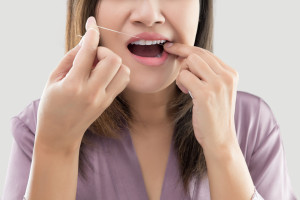 Estimates are rough, but up to 70 million U.S. adults have a sleep disorder, and obstructive sleep apnea is among the most prevalent, and cumbersome—thanks to continuous positive airway pressure (CPAP) treatments which involve Storm Trooper style masks that force constant air down one’s upper respiratory tract. CPAP, it’s like waterboarding, but with air and for only the people you want to keep alive.
Estimates are rough, but up to 70 million U.S. adults have a sleep disorder, and obstructive sleep apnea is among the most prevalent, and cumbersome—thanks to continuous positive airway pressure (CPAP) treatments which involve Storm Trooper style masks that force constant air down one’s upper respiratory tract. CPAP, it’s like waterboarding, but with air and for only the people you want to keep alive.
As many as 7% of men and 5% of women have this disorder wherein the airway is obstructed while sleeping, thus causing a whole range of problems, starting with really poor quality sleep—the breakfast of chumps—and ending with an increased risk of many other health problems including hypertension, stroke, and heart disease.
The increase of sleep apnea is due, researchers believe, to the increasing rate of one of its risk factors: obesity. We’re dentists, not dieticians. So what follows isn’t a recipe for kale shakes or kamut cakes. Instead it’s a rundown of some of the leading oral appliance therapies on the market.
Alternatives to CPAP
There are three categories of oral, or dental, appliances available to people diagnosed with sleep apnea. At their core, they attempt to remove the cause of sleep apnea—the obstruction itself—rather than the symptom, which is the inability to get air down one’s throat.
Mandibular advancement devices
Made of molded, hard plastic, these devices snap over your lower and upper teeth, and also feature metal hinges and screws that can be tightened to push your lower jaw forward. These are—more or less—custom-made by your dentist, so make sure to ask about your dentist’s experience in treating sleep-related breathing disorders. Certification by the American Academy of Sleep Medicine is the benchmark standard.
That’s because non-certified dentists who simply take a mold of your teeth that gets sent to a third-party vendor sometimes totals $4,000 or more after everyone gets their cut. What’s more, it’s unlikely to be covered by your dental or medical insurance if it’s used for snoring.
Mouth Guards
Similar to mandibular advancement devices, mouth guards are all about repositioning, specifically your lower jaw. Less severe in terms of how much repositioning occurs, the process still involves the expertise of a dentist if you want to do it right. Some products start with an impression of your teeth created by a dentist, and others use the so-called “boil and bite” method. That means the device gets placed in a cup of boiling water for a minute, then before it cools the patient bites down on the softened plastic so it molds to the teeth.
Tongue-retaining Devices
While some folks have success using tongue retainers, many folks find these even more cumbersome than CPAP. These devices consist of a soft, plastic splint placed around your tongue that holds it forward and out of your mouth throughout the night. Not surprisingly, they dry out your mouth, which is no small deal. Dry mouth means the bad bacteria in there are thriving while the good bacteria checks out. Saliva, it’s like pesticide, but for bugs in your mouth.
Dentalux
At Dentalux, we believe in and use The Vivos System. It’s a multidisciplinary approach and thorough process of evaluation and treatment using two core products, or appliances:
- The mRNA appliance is an FDA-cleared, Class II medical device for the treatment of snoring and sleep apnea.
- The DNA appliance is registered with the FDA as a Class I device for palatal expansion—this means your jaw is being extended slightly so the airway can no longer get shut off. The DNA appliance’s FDA-clearance is pending. It’s used for the treatment of mild-to-moderate snoring and sleep apnea issues.
If your sleep is not making you feel rejuvenated or if your sleep partner has told you that your snore a lot or, more importantly, that you seem to stop breathing while snoring/sleeping, then you are a candidate for consultation and diagnosis. Don’t hesitate to come on in.







Leave a Reply